Full Metal Jacket
8 /10 1 Votes
95% Rotten Tomatoes 78% Metacritic Genre Drama, War Country United KingdomUnited States | 8.3/10 IMDb 2.5/4 Roger Ebert Duration Language English | |||||||||||||||||||||||||||||||||
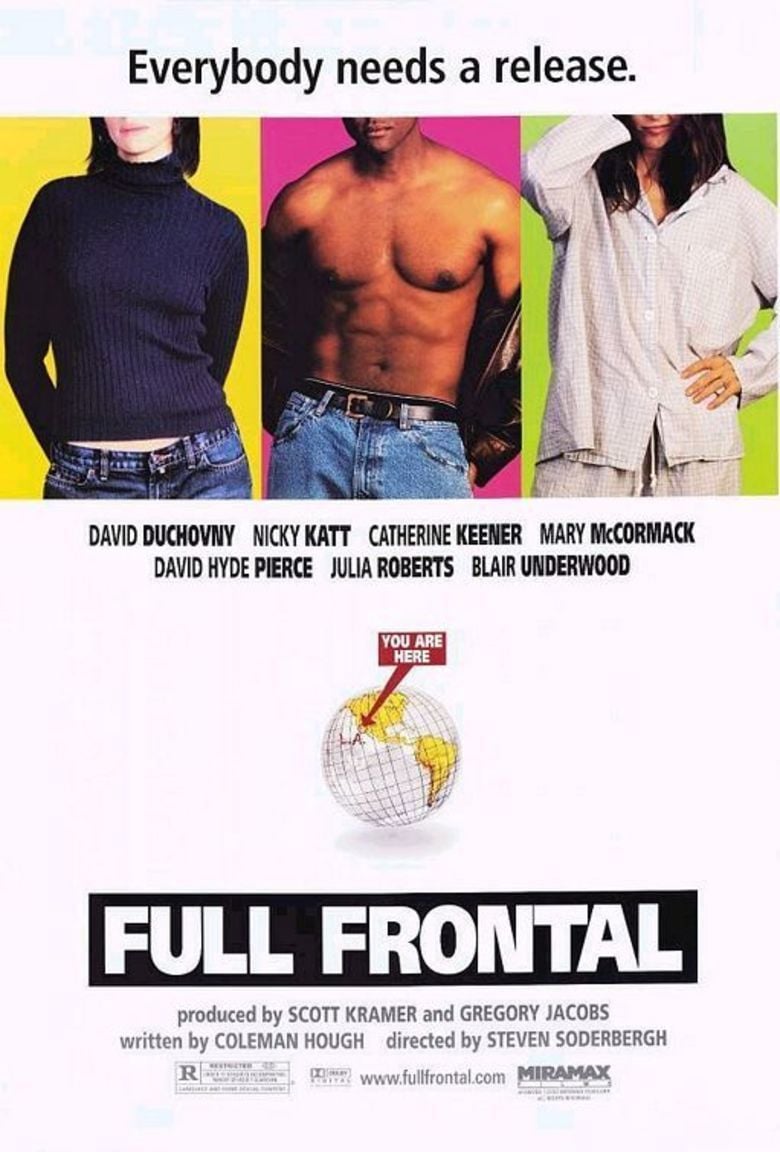 | ||||||||||||||||||||||||||||||||||
Release date June 17, 1987 (1987-06-17) (Beverly Hills)June 26, 1987 (1987-06-26) (United States)September 11, 1987 (1987-09-11) (United Kingdom) Writer Gustav Hasford (novel), Stanley Kubrick (screenplay), Michael Herr (screenplay), Gustav Hasford (screenplay) Awards David di Donatello for Best Foreign Producer Cast (Pvt. Joker), (Animal Mother), (Pvt. Pyle), R. Lee Ermey (Gny. Sgt. Hartman), (Eightball), (Rafterman)Similar movies Salt , The Purge: Anarchy , Looper , '71 , The Thin Red Line , The Devil's Backbone Tagline Vietnam can kill me, but it can’t make me care. | ||||||||||||||||||||||||||||||||||
Full Metal Jacket is a 1987 British-American war film directed and produced by Stanley Kubrick. The screenplay by Kubrick, Michael Herr, and Gustav Hasford was based on Hasford's novel The Short-Timers (1979). Its storyline follows a platoon of U.S. Marines through their training, primarily focusing on two privates, Joker and Pyle, who struggle to get through camp under their foul-mouthed drill instructor, Gunnery Sergeant Hartman, and the experiences of two of the platoon's Marines in the Tet Offensive during the Vietnam War. The film's title refers to the full metal jacket bullet used by soldiers. The film was released in the United States on June 26, 1987.
Contents
- Plot
- Cast
- Development
- Casting
- Filming
- Themes
- Music
- Box office
- Home video
- Critical reception
- Accolades
- Adaptation of novel to film
- References
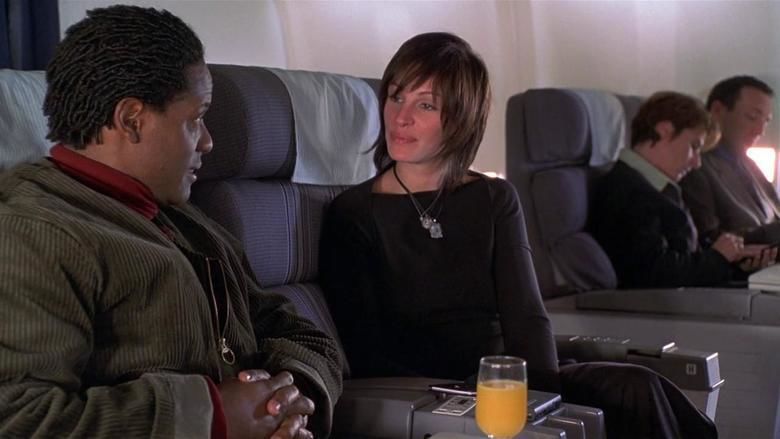
Full Metal Jacket received critical acclaim and an Academy Award nomination for Best Adapted Screenplay for Kubrick, Herr, and Hasford. In 2001, the American Film Institute placed it at No. 95 in their "AFI's 100 Years...100 Thrills" poll.
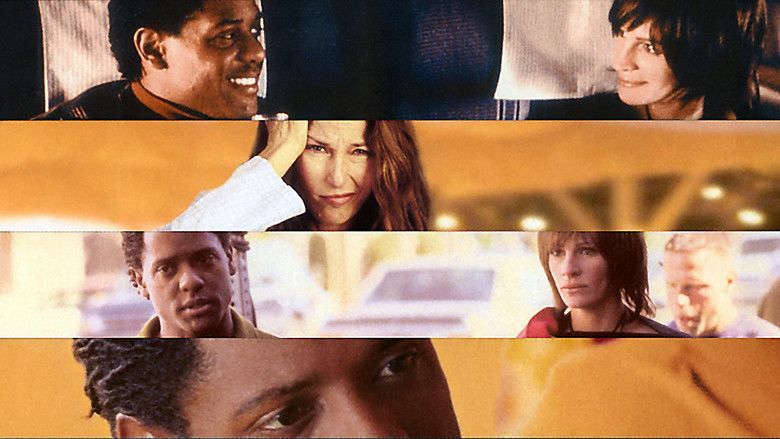
Plot
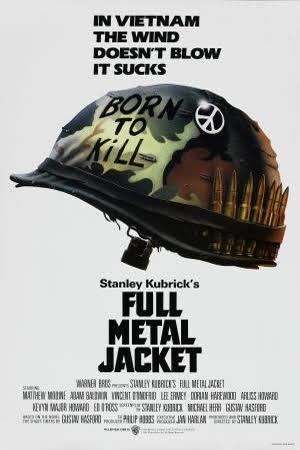
During the Vietnam War, a group of new U.S. Marine Corps recruits arrive at Parris Island, South Carolina, for basic training. After having their heads shaved, they meet Senior Drill Instructor Gunnery Sergeant Hartman, who employs forceful methods to turn the recruits into combat-ready Marines. Among the recruits are Privates "Joker", "Cowboy", and the overweight, bumbling Leonard Lawrence, who earns the nickname "Gomer Pyle" after incurring Hartman's wrath.
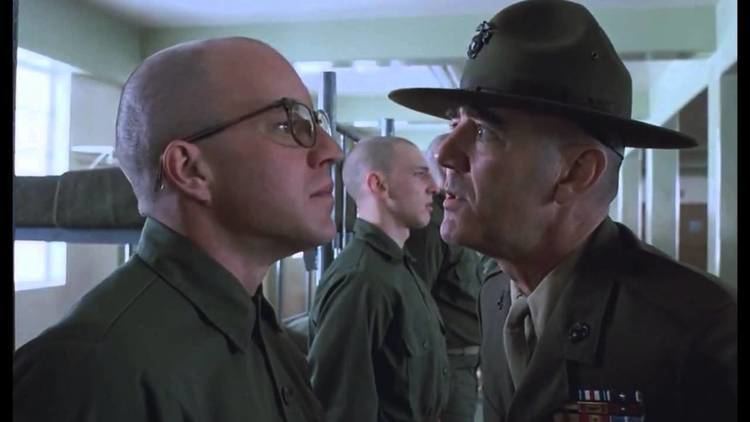
Unresponsive to Hartman's harsh discipline, Pyle is eventually assigned to Joker's squad. Pyle improves with Joker's help, but his progress halts when Hartman discovers a contraband jelly doughnut in Pyle's foot locker. Believing the recruits have failed to improve Pyle, Hartman adopts a collective punishment policy: every mistake Pyle makes will earn punishment for the rest of the platoon, with Pyle being spared. In retaliation for Pyle's failures, the platoon hazes him with a blanket party, restraining him in his bunk while beating him with bars of soap wrapped in towels and used like blackjacks. After this incident, Pyle reinvents himself as a model Marine. This impresses Hartman but worries Joker, who recognizes signs of mental breakdown in Pyle, such as him talking to his M14 rifle.
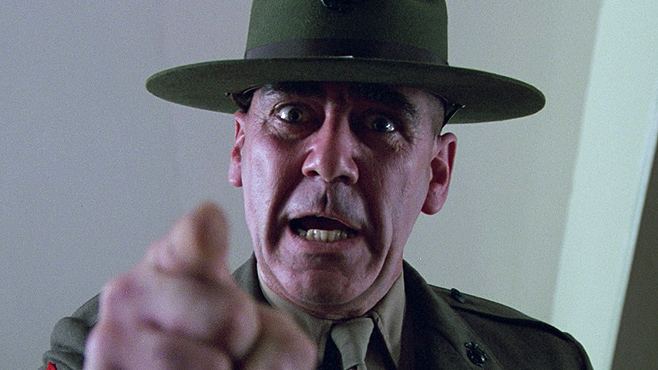
Following their graduation, the recruits receive their Military Occupational Specialty assignments; Joker is assigned to Basic Military Journalism, while most of the others (including Cowboy and Pyle) are assigned to Infantry. During the platoon's final night on Parris Island, Joker discovers Pyle, who is suffering from severe mental breakdown, in the bathroom, loading his rifle with live ammunition. Joker attempts to calm Pyle, who executes drill commands and loudly recites the Rifleman's Creed. The noise awakens the platoon as well as Hartman, who angrily confronts Pyle and orders him to surrender the rifle. Pyle shoots Hartman dead and then kills himself.
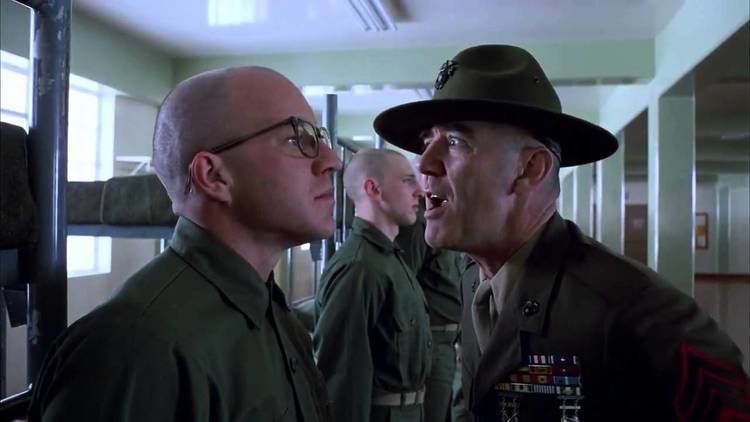
In January 1968, Joker, now a sergeant, is a war correspondent in South Vietnam for Stars and Stripes with Private First Class Rafterman, a combat photographer. Rafterman wants to go into combat, as Joker claims he has done. At the Marine base, Joker is mocked for his lack of the thousand-yard stare, indicating his lack of war experience. They are interrupted by the start of the Tet Offensive as the North Vietnamese Army attempts to overrun the base, but are rebuffed.
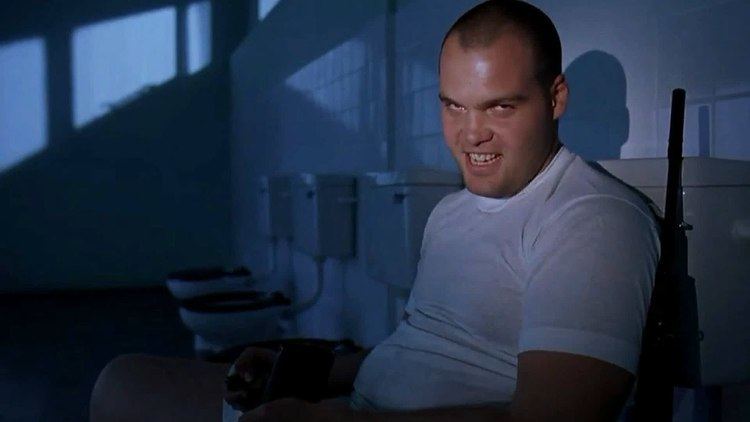
The following day, the journalism staff is briefed about enemy attacks throughout South Vietnam. Joker is sent to Phu Bai, accompanied by Rafterman. They meet the Lusthog Squad, where Cowboy is now a sergeant. Joker accompanies the squad during the Battle of Huế, where platoon commander "Touchdown" is killed by the enemy. After the Marines declare the area secure, a team of American news journalists and reporters enters Huế and interviews various Marines about their experiences in Vietnam and their opinions about the war.
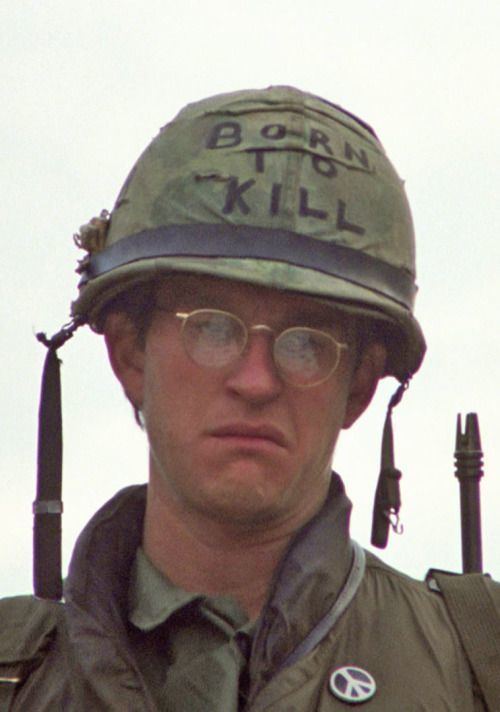
During patrol, Crazy Earl, the squad leader, is killed by a booby trap, leaving Cowboy in command. The squad becomes lost and Cowboy orders Eightball to scout the area. A Viet Cong sniper wounds Eightball and the squad medic, Doc Jay, is also wounded while attempting to save him against orders. Cowboy learns that tank support is unavailable and orders the team to prepare for withdrawal. The squad's machine gunner, Animal Mother, disobeys Cowboy and attempts to save his comrades. He discovers there is only one sniper, but Doc Jay and Eightball are killed when Doc Jay attempts to indicate the sniper's location. While maneuvering toward the sniper, Cowboy is shot and killed.
Animal Mother assumes command of the squad and leads an attack on the sniper. Joker discovers the sniper, a teenaged girl, and attempts to shoot her, but his rifle jams and alerts her to his presence. Rafterman shoots the sniper, mortally wounding her. As the squad converges, the sniper begs for death, prompting an argument about whether or not to kill her. Animal Mother decides to allow a mercy killing only if Joker performs it. After some hesitation, Joker shoots her. The Marines congratulate him on his kill as Joker stares into the distance, displaying the thousand-yard stare. The Marines march toward their camp, singing the "Mickey Mouse March". Joker states that despite being "in a world of shit", he is glad to be alive and no longer afraid.
Cast
Development
Kubrick contacted Michael Herr, author of the Vietnam War memoir Dispatches (1977), in the spring of 1980 to discuss working on a film about the Holocaust, but he eventually discarded that in favor of a film about the Vietnam War. They met in England, and the director told Herr that he wanted to do a war film but had yet to find a story to adapt. Kubrick discovered Gustav Hasford's novel The Short-Timers (1979) while reading the Virginia Kirkus Review. Herr received it in bound galleys and thought that it was a masterpiece. In 1982, Kubrick read the novel twice, concluding that it "was a unique, absolutely wonderful book", and decided, along with Herr, to adapt it for his next film. According to Kubrick, he was drawn to the book's dialogue, finding it "almost poetic in its carved-out, stark quality". In 1983, Kubrick began conducting research for the film, watching past footage and documentaries, reading Vietnamese newspapers on microfilm from the Library of Congress, and studying hundreds of photographs from the era. Initially, Herr was not interested in revisiting his Vietnam War experiences, and Kubrick spent three years persuading him to participate in what the author describes as "a single phone call lasting three years, with interruptions."
In 1985, Kubrick contacted Hasford to work on the screenplay with him and Herr, and often talked to Hasford on the phone three to four times a week, for hours at a time. Kubrick had already written a detailed treatment, and Kubrick and Herr got together at Kubrick's home every day, breaking down the treatment into scenes. From that, Herr wrote the first draft. The filmmaker worried that the book's title might be misread by audiences as referring to people who only did half a day's work and changed it to Full Metal Jacket after discovering the phrase while going through a gun catalogue. After the first draft was completed, Kubrick phoned in his orders, and Hasford and Herr mailed their submissions to him. Kubrick read and edited them, and then the team repeated the process. Neither Hasford nor Herr knew how much he had contributed to the screenplay, which led to a dispute over the final credits. Hasford remembers, "We were like guys on an assembly line in the car factory. I was putting on one widget and Michael was putting on another widget and Stanley was the only one who knew that this was going to end up being a car." Herr says the director was not interested in making an anti-war film, but "he wanted to show what war is like."
At some point, Kubrick wanted to meet Hasford in person, but Herr advised against this, describing The Short-Timers author as a "scary man". Nonetheless, Kubrick insisted, and they all met at Kubrick's house in England for dinner. It did not go well, and Hasford was subsequently shut out of the production.
Casting
Through Warner Bros., Kubrick advertised a national casting search in the United States and Canada. The director used videotape to audition actors and received over 3,000 submissions. His staff screened all of the tapes, leaving 800 of them for Kubrick to review personally.
Former U.S. Marine Drill Instructor Ermey, originally hired as a technical advisor, asked Kubrick if he could audition for the role of Hartman. Kubrick had seen Ermey's portrayal of Drill Instructor Staff Sergeant Loyce in The Boys in Company C (1978) and told the Marine that he was not vicious enough to play the character. Ermey improvised insulting dialogue against a group of Royal Marines who were being considered for the part of background Marines, to demonstrate his ability to play the character, as well as to show how a Drill Instructor goes about breaking down the individuality of new recruits. Upon viewing the videotape of these sessions, Kubrick gave Ermey the role, realizing he "was a genius for this part." Kubrick also incorporated the 250-page transcript of Ermey's rants into the script. Ermey's experience as a Drill Instructor during the Vietnam era proved invaluable. Kubrick estimated that Ermey wrote 50% of his own dialogue, especially the insults.
While Ermey practiced his lines in a rehearsal room, a production assistant would throw tennis balls and oranges at him. Ermey had to catch the ball and throw it back as quickly as possible, while at the same time saying his lines as fast as he could. Any hesitation, slur, or missed line would necessitate starting over. Twenty error-free runs were required. "[He] was my drill instructor", Ermey said of the production assistant.
The original casting plan envisaged Anthony Michael Hall starring as Private Joker. After eight months of negotiations, a deal between Kubrick and Hall fell through. Kubrick offered Bruce Willis a role, but the actor had to turn it down because he was to start filming of the first six episodes of his TV series Moonlighting.
Vincent D'Onofrio heard of the auditions for the film from Matthew Modine. Using a rented video camera and dressed in army fatigues, D'Onofrio recorded his audition for the part of Private Pyle. Despite Kubrick's saying that Pyle was "the hardest part to cast in the whole movie", he quickly responded to D'Onofrio, telling the actor he had won the part.
Filming
Kubrick shot the film in England: in Cambridgeshire, on the Norfolk Broads, and at the former Millennium Mills, Beckton Gas Works, Newham (east London) and the Isle of Dogs. A former RAF and then British Army base, Bassingbourn Barracks doubled as the Parris Island Marine boot camp. A British Army rifle range near Barton, outside Cambridge, was used in the scene where Hartman congratulates Private Pyle for his shooting skills. Kubrick worked from still photographs of Huế, taken in 1968, and found an area owned by British Gas that closely resembled it and was scheduled to be demolished. The disused Beckton Gas Works, a few miles from central London, were filmed to represent Huế after attacks. Kubrick had buildings blown up, and the film's art director used a wrecking ball to knock specific holes in certain buildings over the course of two months. Originally, Kubrick had a plastic replica jungle flown in from California, but once he looked at it he was reported to have said, "I don't like it. Get rid of it". The open country was filmed in the Cliffe marshes, and along the River Thames, supplemented with 200 imported Spanish palm trees and 100,000 plastic tropical plants from Hong Kong.
Kubrick acquired four M41 tanks from a Belgian army colonel (a fan) and Westland Wessex helicopters painted Marine green to represent Marine Corps Sikorsky H-34 Choctaw helicopters. Although the Wessex was a licensed derivative of the Sikorsky H-34, the Wessex substituted two gas turbine engines for the H-34's radial (piston) engine. This resulted in a much longer and less rounded nose than that of the Vietnam era H-34. Kubrick also obtained a selection of rifles, M79 grenade launchers, and M60 machine guns from a licensed weapons dealer.
Modine described the shoot as difficult: Beckton Gas Works was a toxic and environmental nightmare for the entire film crew. Asbestos, and hundreds of chemicals poisoned the earth and air. Modine documents details of shooting at Beckton in his book, Full Metal Jacket Diary (2005). During the "Boot Camp" sequence of the film, Modine and the other recruits had to endure the rigors of Marine Corps training, including having Ermey yelling at them for 10 hours a day during the shooting of the Parris Island scenes. To ensure the actors' reactions to Ermey were as authentic and fresh as possible, Ermey and the recruits did not rehearse together. For film continuity, each recruit had to have his head shaved once a week.
At one point during filming, Ermey had a car accident, broke all of his ribs on one side, and was out for four-and-half months.
Cowboy's death scene shows a building in the background that resembles the famous alien monolith in Kubrick's 2001: A Space Odyssey (1968). Kubrick described the resemblance as an "extraordinary accident".
During filming, Hasford contemplated taking legal action over the writing credits. Originally, the filmmakers intended for Hasford to receive an "additional dialogue" credit, but he wanted full credit. The writer took two friends and sneaked onto the set dressed as extras, only to be mistaken by a crew member for Herr.
Kubrick's daughter Vivian—who appears uncredited as a news-camera operator at the mass grave—shadowed the filming of Full Metal Jacket. She shot 18 hours of behind-the-scenes footage for a potential "making-of" documentary similar to her earlier film documentary on Kubrick's The Shining (1980). In this case, she did not complete such a documentary. Snippets of her work can be seen in the documentary Stanley Kubrick's Boxes (2008).
Themes
Compared to Kubrick's other works, the themes of Full Metal Jacket have received little attention from critics and reviewers. Michael Pursell's essay "Full Metal Jacket: The Unravelling of Patriarchy" (1988) was an early, in-depth consideration of the film's two-part structure and its criticism of masculinity, arguing that the film shows "war and pornography as facets of the same system".
Most reviews have focused on military brainwashing themes in the boot camp training section of the film, while seeing the latter half of the film as more confusing and disjointed in content. Rita Kempley of The Washington Post wrote, "it's as if they borrowed bits of every war movie to make this eclectic finale." Roger Ebert said, "The movie disintegrates into a series of self-contained set pieces, none of them quite satisfying." Julian Rice, in his book Kubrick's Hope (2008), sees the second part of the film as continuing the psychic journey of Joker in trying to come to grips with human evil.
Tony Lucia, in his July 5, 1987, review of Full Metal Jacket for the Reading Eagle, looked at the themes of Kubrick's career, suggesting "the unifying element may be the ordinary man dwarfed by situations too vast and imposing to handle". Lucia specifically refers to the "military mentality" in this film. He said further that the theme covered "a man testing himself against his own limitations", and he concluded: "'Full Metal Jacket' is the latest chapter in an ongoing movie which is not merely a comment on our time or a time past, but on something that reaches beyond."
British critic Gilbert Adair wrote: "Kubrick's approach to language has always been reductive and uncompromisingly deterministic in nature. He appears to view it as the exclusive product of environmental conditioning, only very marginally influenced by concepts of subjectivity and interiority, by all the whims, shades and modulations of personal expression".
Michael Herr wrote of his work on the sceenplay: "The substance was single-minded, the old and always serious problem of how you put into a film or a book the living, behaving presence of what Jung called The Shadow, the most accessible of archetypes, and the easiest to experience ... War is the ultimate field of Shadow-activity, where all of its other activities lead you. As they expressed it in Vietnam, 'Yea, though I walk through the Valley of the Shadow of Death, I will fear no Evil, for I am the Evil'."
In a 2009 review, Dan Schneider said that Kubrick got the story narrative of Full Metal Jacket from the second part of the epic film series, The Human Condition.
Music
Kubrick's daughter, Vivian Kubrick, under the alias "Abigail Mead", wrote the film's score. According to an interview which appeared in the January 1988 issue of Keyboard Magazine, the film was scored mostly with a Fairlight CMI synthesizer (the then-current Series III edition) and a Synclavier. For the period music, Kubrick went through Billboard's list of Top 100 Hits for each year from 1962–1968 and tried many songs, but "sometimes the dynamic range of the music was too great, and we couldn't work in dialogue."
A single, "Full Metal Jacket (I Wanna Be Your Drill Instructor)", credited to Mead and Nigel Goulding, was released to promote the film. It incorporates Ermey's drill cadences from the film. The single reached number two in the UK pop charts.
Box office
Full Metal Jacket received a limited release on June 26, 1987, in 215 theaters. Its opening weekend saw it accrue $2,217,307, an average of $10,313 per theater, ranking it the number 10 film for the June 26–28 weekend. It took a further $2,002,890 for a total of $5,655,225 before entering wide release on July 10, 1987, at 881 theaters—an increase of 666. The July 10–12 weekend saw the film gross $6,079,963, an average of $6,901 per theater, and rank as the number 2 grossing film. Over the next four weeks the film opened in a further 194 theaters to its widest release of 1,075 theaters before closing two weeks later with a total gross of $46,357,676, making it the number 23 highest-grossing film of 1987.
Home video
The film was released on Blu-ray on October 23, 2007, in the US and other countries. On April 9, 2012, Warner Home Video announced they would release the 25th anniversary edition on Blu-ray on August 7, 2012.
Critical reception
Review aggregation website Rotten Tomatoes retrospectively collected reviews to give the film a score of 95% based on reviews from 75 critics and an average rating of 8.3 out of 10. The summary states, "Intense, tightly constructed, and darkly comic at times, Stanley Kubrick's Full Metal Jacket may not boast the most original of themes, but it is exceedingly effective at communicating them." Another aggregator Metacritic gave it a score of 76 out of 100, which indicates a "generally favorable" response, based on 19 reviews. Reviewers generally reacted favorably to the cast, Ermey in particular, and the film's first act in recruit training, but several reviews were critical of the latter part of the film set in Vietnam and what was considered a "muddled" moral message in the finale. It ranks #95 on AFI's 100 Years... 100 Thrills.
Richard Corliss of Time called the film a "technical knockout", praising "the dialogue's wild, desperate wit; the daring in choosing a desultory skirmish to make a point about war's pointlessness", and "the fine, large performances of almost every actor", believing, at the time, that Ermey and D'Onofrio would receive Oscar nominations. Corliss also appreciated "the Olympian elegance and precision of Kubrick's filmmaking". Empire's Ian Nathan awarded the film 3 out of 5 stars, saying it is "inconsistent" and describing it as "both powerful and frustratingly unengaged". Nathan felt that after leaving the opening act following the recruit training, the film becomes "bereft of purpose", but he summarized his review by calling it a "hardy Kubrickian effort that warms on you with repeated viewings". Nathan also praised Ermey's "staggering performance". Vincent Canby of The New York Times called it "harrowing, beautiful and characteristically eccentric". Canby echoed praise for Ermey, calling him "the film's stunning surprise … he's so good—so obsessed—that you might think he wrote his own lines". Canby also said D'Onofrio's performance should be noted with "admiration", and he called Modine "one of the best, most adaptable young film actors of his generation". Canby concluded: Full Metal Jacket was "a film of immense and very rare imagination".
Jim Hall, writing for Film4 in 2010, awarded the film 5 out of 5 stars and added to the praise for Ermey, saying his "performance as the foul-mouthed Hartman is justly celebrated and it's difficult to imagine the film working anything like as effectively without him". The review also preferred the opening training to the later Vietnam sequence, calling it "far more striking than the second and longer section". Film4 commented that the film ends abruptly but felt "it demonstrates just how clear and precise the director's vision could be when he resisted a fatal tendency for indulgence". Film4 concluded: "Full Metal Jacket ranks with Dr. Strangelove as one of Kubrick's very best." Jonathan Rosenbaum of the Chicago Reader called it "Elliptical, full of subtle inner rhymes … and profoundly moving, this is the most tightly crafted Kubrick film since Dr. Strangelove, as well as the most horrific." Variety called the film an "intense, schematic, superbly made" drama "loaded with vivid, outrageously vulgar military vernacular that contributes heavily to the film's power", but felt that it never develops "a particularly strong narrative." The cast performances were all labeled "exceptional" with Modine being singled out as "embodying both what it takes to survive in the war and a certain omniscience." Gilbert Adair, writing in a review for Full Metal Jacket, commented that "Kubrick's approach to language has always been of a reductive and uncompromisingly deterministic nature. He appears to view it as the exclusive product of environmental conditioning, only very marginally influenced by concepts of subjectivity and interiority, by all whims, shades and modulations of personal expression".
Not all reviews were positive. Chicago Sun-Times critic Roger Ebert held a dissenting view, calling the film "strangely shapeless" and awarding it 2.5 stars out of 4. Ebert called it "one of the best-looking war movies ever made on sets and stage" but felt this was not enough to compete with the "awesome reality of Platoon, Apocalypse Now and The Deer Hunter." Ebert also criticized the film's second act set in Vietnam, saying the "movie disintegrates into a series of self-contained set pieces, none of them quite satisfying" and concluded that the film's message was "too little and too late", having been done by other Vietnam War films. However, Ebert also gave praise to Ermey and D'Onofrio, saying "these are the two best performances in the movie, which never recovers after they leave the scene." This certain review angered Gene Siskel on their television show At The Movies; he criticized Ebert for liking Benji the Hunted (which came out the same week) more than Full Metal Jacket. Their difference in opinion was parodied on the television show The Critic, where Siskel taunts Ebert with "coming from the guy who liked Benji the Hunted!" Time Out London also disliked the film saying "Kubrick's direction is as steely cold and manipulative as the régime it depicts", and felt that the characters were underdeveloped, adding "we never really get to know, let alone care about, the hapless recruits on view."
British television channel Channel 4 voted it number 5 on its list of the greatest war films ever made. In 2008, Empire placed Full Metal Jacket number 457 on its list of The 500 Greatest Movies of All Time.
Accolades
Full Metal Jacket was nominated for eleven awards worldwide between 1987 and 1989 including an Academy Award for Best Adapted Screenplay, two BAFTA Awards for Best Sound and Best Special Effects, and a Golden Globe for Best Supporting Actor for Ermey. Ultimately it won five awards, three from organisations outside of the United States: Italy, Japan, and the United Kingdom. The film won Best Foreign Language Film from the Japanese Academy, Best Producer from the David di Donatello Awards, Director of the Year from the London Critics Circle Film Awards, and Best Director and Best Supporting Actor from the Boston Society of Film Critics Awards, for Kubrick and Ermey respectively. Of the five awards won, four were awarded to Kubrick.
Adaptation of novel to film
Film scholar Greg Jenkins has done a detailed analysis of the adaptation of the novel as a screenplay. The novel is in three parts. The film greatly expands the relatively brief section in Part I, about the boot camp on Parris Island, and essentially discards Part III. This gives the film a twofold structure, telling two largely independent stories connected by the same characters acting in each. Jenkins believes this structure is a development of concepts that Kubrick has had since the 1960s. At that time, Kubrick talked about wanting to explode the usual conventions of narrative structure.
Sergeant Hartman (renamed from the book's Gerheim) has an expanded role in the film. In the film, Private Pyle's incompetence is presented as weighing negatively on the rest of the platoon and in the film, unlike the novel, he is the only under-performing recruit. The film omits "Hartman's" disclosure to other troops that he thinks Pyle might be mentally unstable, a "Section 8". In contrast, Hartman praises Pyle, saying that he is "born again hard". Jenkins says that the character of Hartman could not have been portrayed as having a warmer social relationship with the troops, as that would have upset the balance of the film, which depends on the spectacle of ordinary soldiers coming to grips with Hartman as a force of nature embodying a killer culture.
Various episodes in the book have been cut from the screenplay or conflated with others. For example, Cowboy's introduction of the "Lusthog Squad" has been both markedly shortened and supplemented by material from other sections of the book. Although the book's final, third section was largely dropped, elements from this section were inserted into other episodes of the film. For instance, the climactic episode with the sniper is a conflation of two episodes in the book, from Parts II and III. Jenkins thinks the film presents this passage more dramatically but in less gruesome detail than in the novel.
The film often has a more tragic tone than the book, which relies on callous humor. Joker in the film remains a model of humane thinking, as evidenced by his moral struggle in the sniper episode and elsewhere. He works to overcome his own meekness, rather than to compete with other Marines. The film omits the book's showing his eventual domination over Animal Mother.
The film also omits the death of the character Rafterman. Jenkins believed this allowed viewers to reflect on Rafterman's personal growth in the film and speculate on his future growth after the war. Jenkins also believed Rafterman's death would not have fit the plot of the screenplay.
References
Full Metal Jacket WikipediaFull Metal Jacket IMDbFull Metal Jacket Rotten TomatoesFull Metal Jacket Roger EbertFull Metal Jacket MetacriticFull Metal Jacket themoviedb.org
